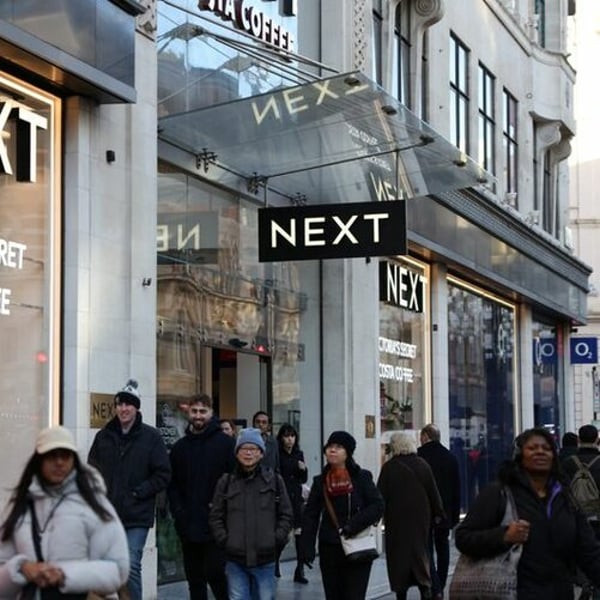On 1 November 2024, a concrete canopy collapsed at the railway station in Novi Sad, Serbia’s second-largest city, killing 16 people. The tragedy triggered the longest wave of protests the country had seen in a decade – a spontaneous uprising against corruption, negligence and the arrogance of power. One year on, the cracks in Serbia’s concrete have turned into fissures in its political foundations.
The calamity cut deep for two reasons.
First, every Serbian has a story about that station. Built in 1964 and reconstructed in recent years to serve the new high-speed line between Belgrade and the Hungarian border, Novi Sad’s station has long been a meeting place for the north of the country – a place where families and friends said hello, or goodbye. Only a week before the collapse, I had left my wife and daughters waiting in its shadow to buy water and snacks from a nearby kiosk. What happened to those 16 victims could have happened to any of us.
Second, infrastructure is the regime’s pride and propaganda. For more than a decade, President Aleksandar Vučić’s ruling party has measured its success in kilometres of asphalt and track. Every election campaign features new promises of roads, bridges and tunnels. The forthcoming Expo 2027 in Belgrade is the government’s showcase. But in Vučić’s Serbia speed, patronage and political gain are seen to come before safety or oversight.
Novi Sad’s station, for example, has been ceremonially opened twice, in 2022 and again in 2024. The prominent March 2022 reopening took place during election campaigns in Serbia and Hungary: Viktor Orbán and Vučić stood side by side, a fitting pairing of two leaders whose regimes seem to compete only in their control of media, their disdain for institutions, and their courting of Moscow.
This summer, Vučić inaugurated another motorway section even though part of it lacked a proper permit, and a tunnel had no automatic safety monitoring. The government’s solution was to suspend the tunnel-safety rulebook and station round-the-clock emergency crews – firefighters, police and an ambulance – at its entrance.
The canopy’s fall did not create Serbia’s crisis; it exposed it. Over the past 12 years, the regime has captured every institution, hollowing out a democracy painfully built between 2000 and 2012. With courts, media, and regulators under party control, the street remains the only public forum. Since 2016, Serbia has seen near-annual protest waves – each one a training ground for the next generation of demonstrators.
Since the huge Belgrade protest on 28 June, the regime has dropped all its masks. During regular protests across the country, police beat and chased peaceful demonstrators through the streets; nearly a thousand citizens have been arrested since the uprising began. The state no longer hides its fear – it wields it.
Vučić’s government likes to appear as if it sits on several geopolitical chairs, balanced between east and west, but in reality it runs the country for the president’s benefit, taking money from Brussels and orders from Moscow. The weaker Vučić’s party becomes in the polls, the more it relies on its core support, which largely pro-Russian, nationalistic and rightwing – and the more it leans towards Moscow. Such an ungovernable equilibrium carries with it the risk of instability spilling over, into the rest of the western Balkans.
Russia’s grip on Serbia’s security apparatus remains dangerously underestimated. Its intelligence networks move with impunity, from the suspected training camps uncovered on Serbian soil – where operatives rehearsed chaos for Moldova’s election day – to the corridors of Belgrade’s own institutions. Meanwhile, the so-called “anti-protest movement” – a motley crew of hired thugs and regime loyalists – borrows straight from the Kremlin’s playbook, a Serbian remix of Ukraine’s anti-Maidan.
By late 2024, even before the fall of the canopy, the public mood had shifted decisively. A national poll in September 2024 found more Serbs saying the country was moving in the wrong direction (47%) than the right one (46%). Since then, disillusion has deepened, to 53% versus 36%. Inflation remains above the EU average, wages lag behind costs, and debt, while no longer hitting new records, remains staggering. In response to the protests, Belgrade city council even made public transport free – a gesture emblematic of a broader trend of governing as if state resources will never run out, in a capital that was effectively bankrupt last year.
Vučić’s Serbia now resembles a governmental Ponzi scheme: borrowing legitimacy through spectacle while deferring collapse. The US sanctions on the mostly Russian-owned Petroleum Industry of Serbia (NIS), which took effect on 9 October 2025, threaten the country’s energy stability and an entire reindustrialisation growth model built on cheap Russian gas. The government’s ad-hoc response only underlines the absence of any coherent policy.
after newsletter promotion
After months of student-led protests, Serbia is almost ungovernable – suspended between constantly growing repression and renewal. Western diplomats still hope for calm: the EU prefers not to rock the Balkan boat while the war in Ukraine rages and Moscow stirs hybrid threats. But Serbia cannot go back.
Ahead of the 1 November anniversary protests, several paths are possible, yet one thing is clear – the pre-canopy status quo is gone for good. Neither civil society, nor the opposition, nor the students will return to the staged “dialogues” that passed for politics before.
Serbia’s students have joined a global gen Z front of defiance. Their refusal to be silent in the face of corruption and impunity shows that democracy’s renewal may once again come from the streets, and from the young.
A year on, the system that brought down the canopy that killed 16 people still stands. The protests sprang from grief, but they now persist in the spirit of endurance. What Serbia has built in 12 months is not a new station but a new awareness – that stability under Vučić was never real. It was always borrowed time, a peace mortgaged against the next collapse.


